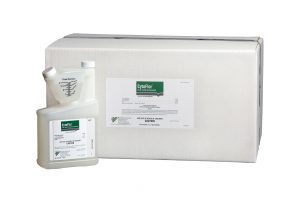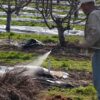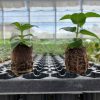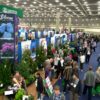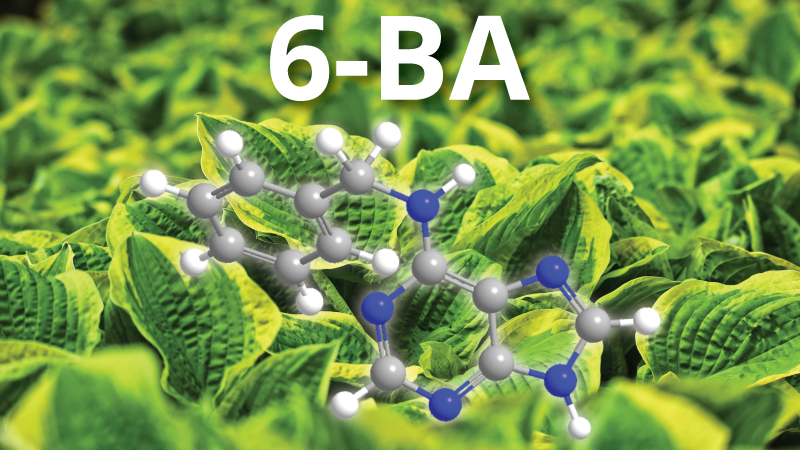
Commercial ornamental plant growers have to satisfy various consumer requirements in order to deliver high-quality plants. One of the most important of these requirements is the aesthetic value of the ornamental plants, and desired plant habit such as plant height or compactness and number of flowers, that makes them more desirable for purchase by consumers. Furthermore, growers often have to produce plants based on calendar dates that do not always follow the natural growth cycle of the plants. In order to produce high-quality plants, growers use a variety of cultural practices and chemical products to influence plant growth. Plant growth regulators are some of the more powerful and important tools professional growers can use to influence plant growth and produce high-quality plants. Of the commercially available plant growth regulators, cytokinins is one of the most important groups.
CytoFlor is the newest member of the Mycorrhizal Applications/Valent BioSciences plant growth regulator portfolio, which contains 6-benzyladenine (6-BA) a synthetic cytokinin, as the active ingredient. Cytokinins are essential hormones for plant growth and development and are involved in many physiological functions including the release of lateral buds from apical dominance and the promotion of cell division and differentiation from undifferentiated tissues. Applications of 6-BA increase branching and enhance flowering in a wide range of herbaceous and woody ornamentals, improving crop marketability. In addition, applications of 6-BA can reduce the overall height of the plant resulting in more compact and marketable plants.
The first pure 6-BA-based plant growth regulator (MaxCel) was introduced to the US horticulture industry in 2003 by Valent BioSciences. Although research interest in cytokinins, including 6-BA, has always been very high since its discovery in the 1950s, and 6-BA showed promise for various practical horticultural and ornamental uses, the high cost in the past precluded any extensive experimental use and any possible commercial use. The first commercial product (MaxCel) has been registered and used for chemical fruit thinning in pome fruit in all the major apple-growing regions of the world. Since the introduction of MaxCel in the apple industry, different uses of 6-BA have been under investigation in ornamental crops. In the last years, Mycorrhizal Applications/Valent BioSciences has been conducting studies using 6-BA on ornamental crops with private and public researchers. The emphasis of these studies has been placed on the following uses: branching, promotion of flowering, and removal of undesired fruit to generate supporting data for product registration.
CytoFlor plant growth regulator is registered1 in ornamental crops for the following uses:
- Increasing of branching and flowering in Christmas cactus
- Promotion of lateral growth and offset production of plantain lily
- Increasing of lateral branching and flower bud formation in containerized annual and perennial flowering and foliage crops and tropical plants
- Increasing of lateral branching and flower bud formation in non-edible plants and non-bearing fruit trees
- Removing of undesired fruit from nursery ornamental apple and pear trees
1CytoFlor is registered in most states of the US. Registration in California is expected in 2021.
(Some of these uses have been known for several years but the addition of the last two uses are new to 6-BA products.)
- Increasing of branching and flowering of Christmas cactus (Schlumbergera)
Christmas cactus exhibit relatively slow growth, requiring approximately seven weeks for each phylloclade (flattened green stem segment) to develop. Flower development is a slower process with a low number of flower buds to form per phylloclade. Since flower buds are normally formed on apical phylloclades, the number of flowers per plant is determined by the level of branching. Plants exhibiting more branching are expected to produce more apical phylloclades and, consequently, more flowers than those less branched. Therefore, there is a strong need for the use of plant growth regulators that can enhance vegetative growth rate, i.e., phylloclade development and flower bud formation in these plants. CytoFlor is effective at increasing both phylloclade development and flower bud formation in Christmas cactus. Timing is critical for these applications; while branching and vegetative growth are induced under long-day conditions, flower bud formation is enhanced under short-day conditions.
The first published report on the successful use of 6-BA for increased branching and flower production in Schlumbergera cactus was over forty years ago by Japanese researchers. Since then, application conditions and practices have been fine-tuned and successfully applied on a commercial scale around the world. For enhancement of vegetative growth, i.e., phylloclade development, 6-BA has to be applied at the vegetative stage of the plant, under long-day conditions. For this use, a concentration of 100 ppm provides excellent results (Fig. 1).
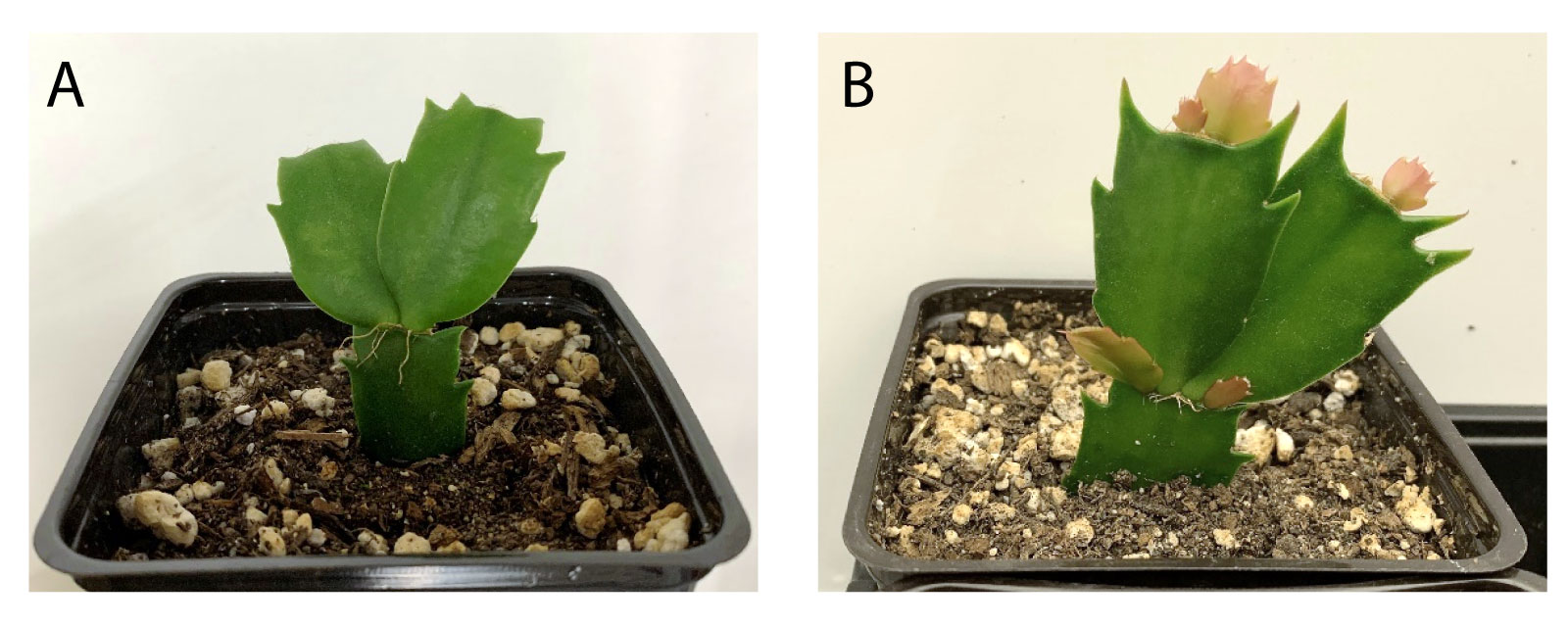
Fig. 1. The effect of CytoFlor on branching of Christmas cactus cuttings; A) untreated control and B) foliar spray of CytoFlor. A single foliar application of CytoFlor at 100 ppm 6-BA rate induced extensive phylloclade development under short-day conditions.
Application of CytoFlor to increase flower bud formation has to be made under short-day conditions. CytoFlor should be applied for phylloclade development early enough to allow the phylloclades to fully mature before the start of short days to induce flower bud development. The right time of application is 5-10 days after the initiation of short days or once the first flower buds become visible. If the application is too early, phylloclade development will occur and flower bud development will be suppressed. The maximum allowed spray concentration of 6-BA is 200 ppm, somewhat higher than the one for the vegetative use. Test cultivar sensitivity to 6-BA before applying the product on large scale; rates vary by cultivar and 50-100 ppm 6-BA might be sufficient on responsive cultivars.
- Promotion of lateral growth and offset production of plantain lily (Hosta spp.)
Hosta plants can be commercially propagated by crown division. Crown buds develop on the storage stem/root region of the crown as separate units comprising several associated buds. Most cultivars, however, do not branch and develop crown buds because of the strong apical dominance, a process regulated by an internal balance between auxin and cytokinins. Cytokinins, including 6-BA, can release these buds from inhibition when applied exogenously. Over the years, numerous studies have demonstrated the efficacy of 6-BA in promoting the outgrowth of crown buds in Hosta thereby increasing basal branching and offset production. CytoFlor is registered for this use at a range of 1,000 to 3,000 ppm 6-BA rate for foliar application. Hosta plants often require high rates but cultivar sensitivity is very important. Some cultivars (e.g., ‘Guacamole’, ‘Big Daddy’) are responsive to 1,000 ppm 6-BA rates but others require 3,000 ppm for sufficient branching (e.g., ‘Frances Williams’). Multiple applications at 30-day intervals using lower rates may be more effective than a single application at higher rates. Conduct trials on a small number of plants under actual use conditions to establish the proper use rates and timings. Because translocation of the active ingredient is limited within the plant, it is important that sufficient volumes of water are used to thoroughly wet plant foliage. Spray uniformity is equally important.
Application of CytoFlor is most effective when plants are actively growing, i.e., in the spring and summer, during long daylength conditions. Early spring and late summer applications are less effective because the natural growth of Hosta is decreased and the plant is less responsive to cytokinin applications. On finished plants, CytoFlor is best applied when plants are fully established prior to application (i.e., at least 3 to 4 weeks after potting), when there is evidence of surface root development, but before flower initiation. In propagation, foliar applications should be made during active growth of stock plants. Offsets may be harvested at any time.
- Increasing of lateral branching and flower bud formation in containerized annual and perennial flowering and foliage crops and tropical plants.
Ornamental plant growers often need to encourage branching in certain crops that exhibit strong apical dominance (e.g., single-stem plants, plants that form long runners) or in stock plants to be used as sources for propagation (e.g., cuttings, propagule production). CytoFlor in these cases acts as a branching agent by interrupting apical dominance, which triggers lateral buds to grow and fill in the plant. Due to the branching effect, it often inhibits the upward growth of the plants. Greater branching often results in a higher number of flowers, as well. There are numerous plants that are responsive to CytoFlor applications, ranging from annuals to perennials to foliage crops, and even to tropical plants.
We conducted several experiments with various ornamental plant species with excellent results:
- The number of chicks (offset production) in Sempervivum and other succulents can be significantly increased by a single foliar application of CytoFlor. While the 250 ppm rate provides sufficient aesthetic results, higher rates (500 ppm) are excellent for propagation purposes ( 2).
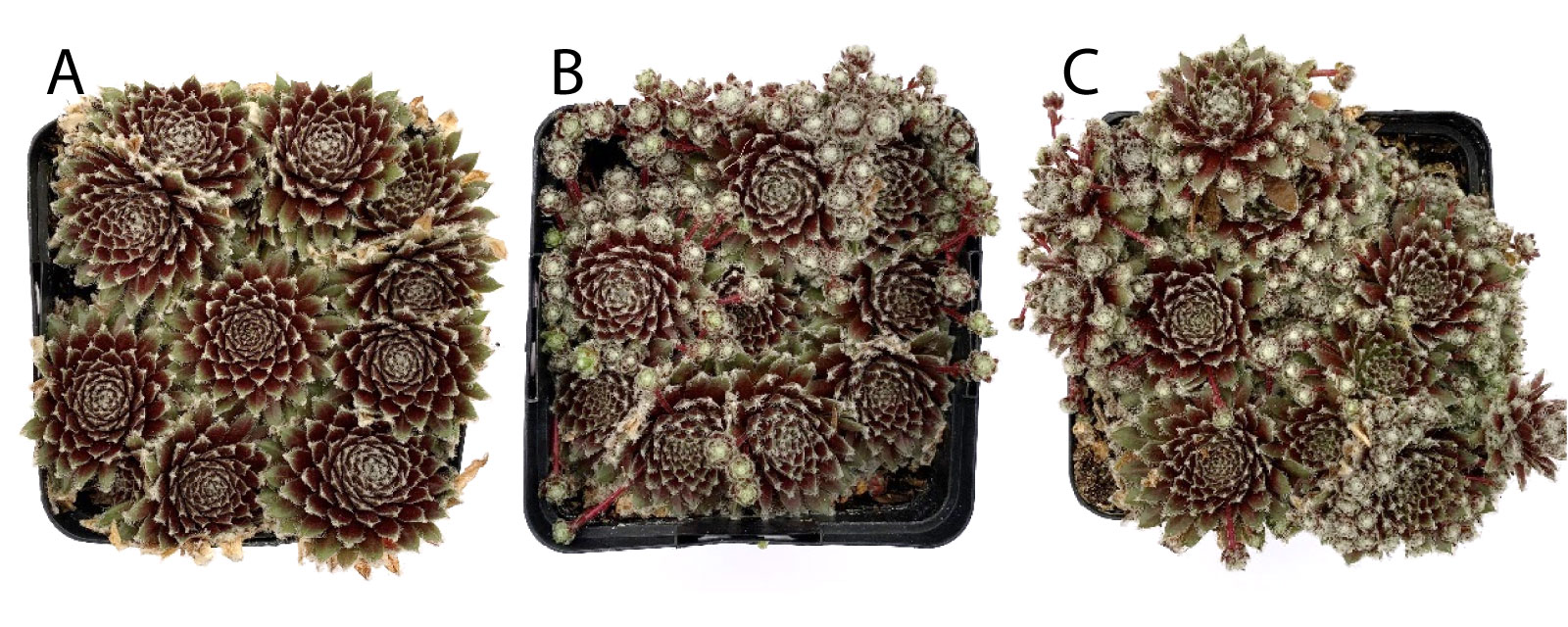
Fig. 2. The effect of foliar application of CytoFlor on offset production of ‘Cosmic Candy’ Sempervivum: untreated control (A); CytoFlor at 250 ppm 6-BA rate (B); and CytoFlor at 500 ppm 6-BA rate (C).
- Echinacea appears to be very responsive to cytokinins. We were able to significantly increase pot fill and the number of flowers with foliar application of CytoFlor in this plant with a single foliar 500 ppm rate ( 3). It was noticeable that CytoFlor-treated plants exhibited darker green foliage when compared with the untreated control plants.
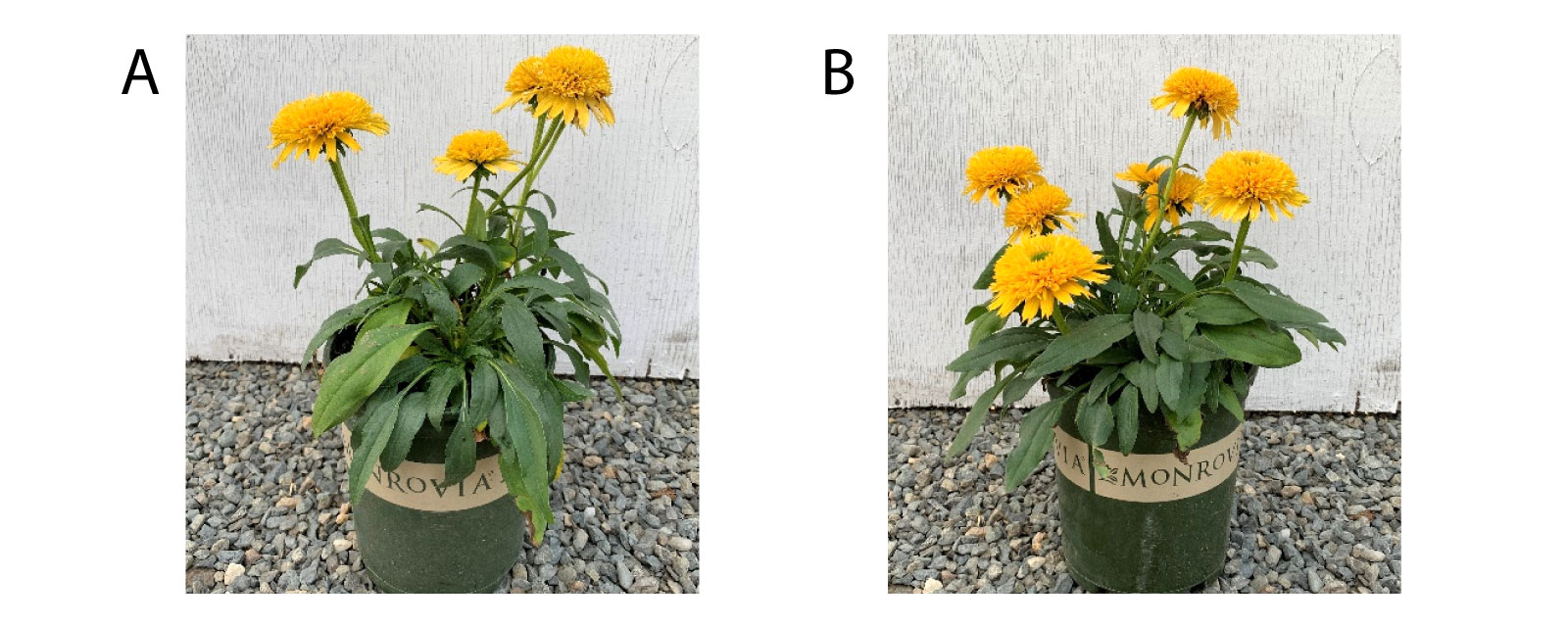
Fig. 3. The effect of foliar application of CytoFlor on pot fill and flower production of ‘Cara Mia Yellow’ Echinacea plants: untreated control (A); and CytoFlor at 500 ppm 6-BA rate (B).
- Pot fill was increased with both 250 ppm and 500 ppm foliar application of CytoFlor in Lavender plants, as well. Increased pot fill was due to increased branching ( 4). No phytotoxicity was noticed in any of the rates tested.
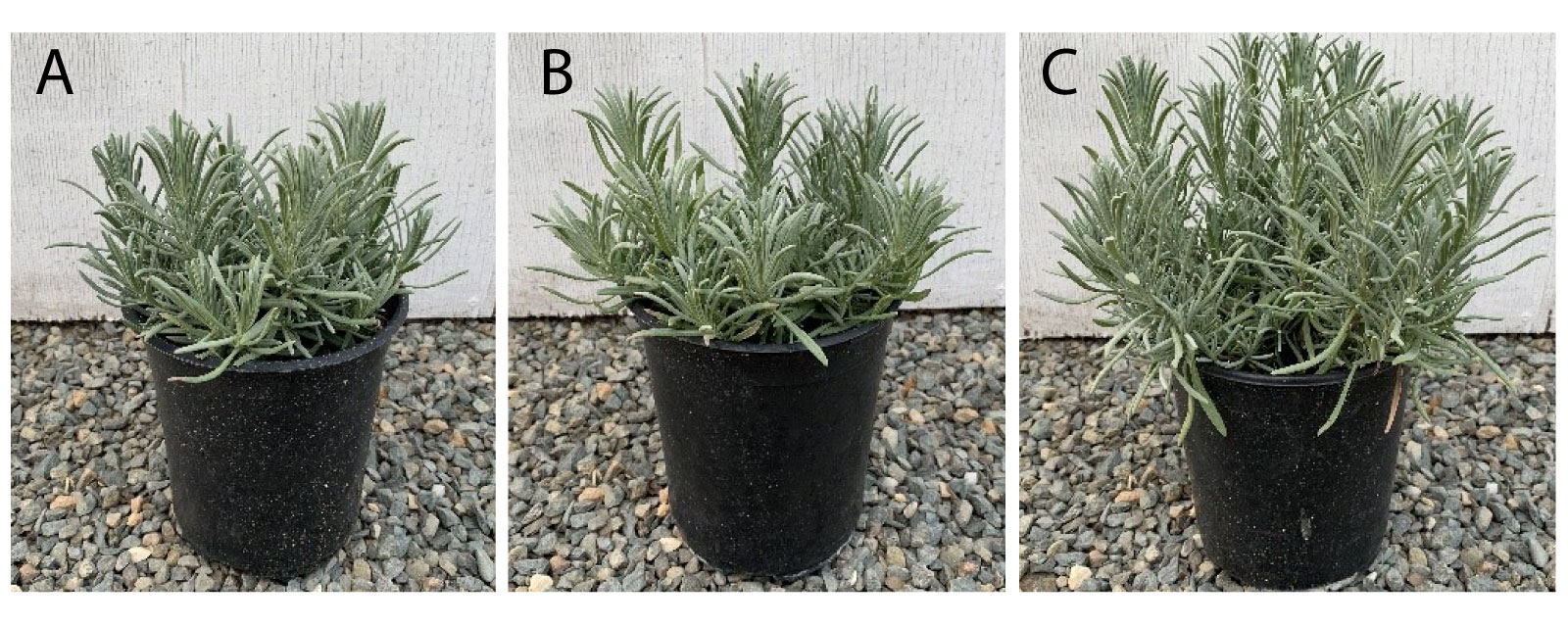
Fig. 4. Effect of CytoFlor application on pot fill in Lavandula x intermedia ‘Dilly Dilly’. Treatments: Untreated control (A), 250 ppm 6-BA (B), and 500 ppm 6-BA (C).
- Vegetative growth and branching can be increased with CytoFlor in woody perennials such as boxwood ( 5). The lower, 250 ppm rate is not sufficient to induce branching. Double or multiple applications of at least 500 ppm 6-BA is needed for adequate efficacy.
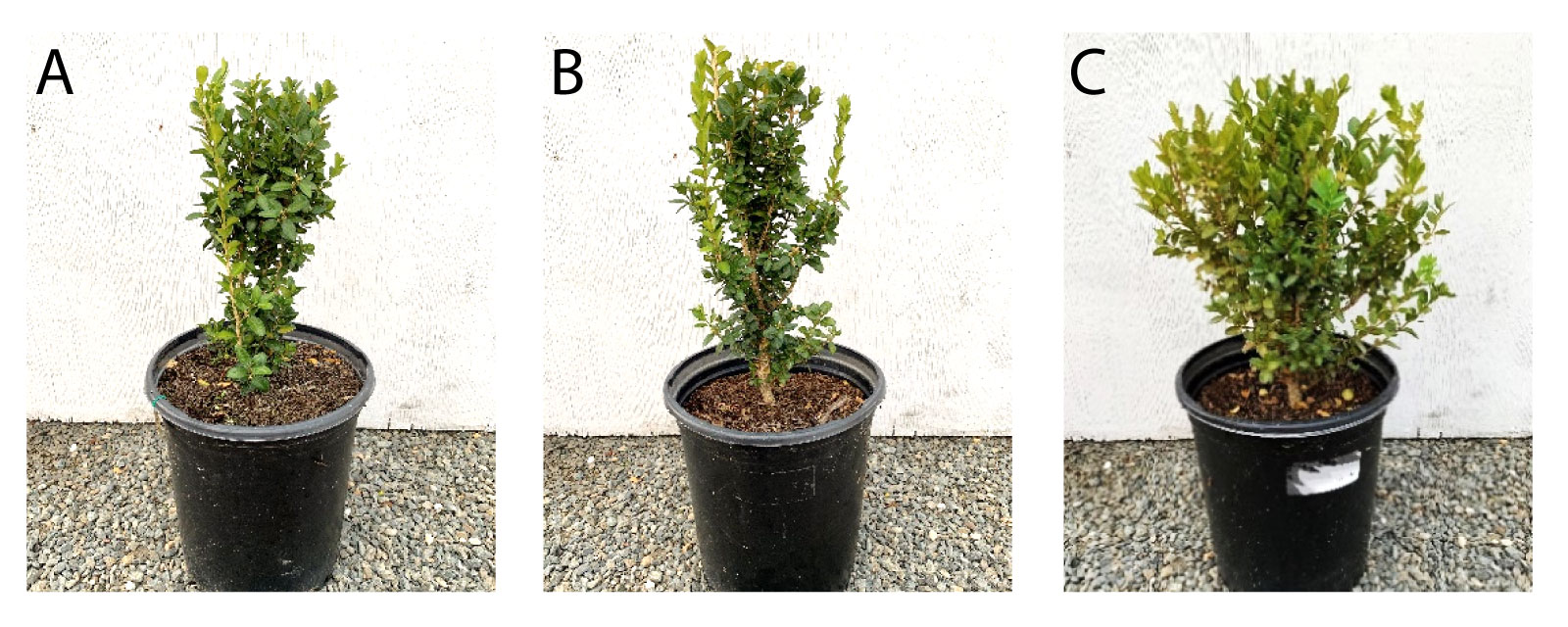
Fig. 5. Vegetative growth of boxwood ‘Highlander’ plants after foliar application of CytoFlor plant growth regulator. Treatments: Untreated control (A), 250 ppm 6-BA (B), and 500 ppm 6-BA (C).
Due to the wide range of plants and thus production methods, the label allows for flexible applications including both foliar and drench applications. The rates range from 50 to 500 ppm 6-BA, in most annual plants 200-300 ppm rates work well, while woody perennials and some tropicals often require higher rates (400-500 ppm 6-BA) for adequate results.
The 6-BA active ingredient of CytoFlor is known to be rapidly metabolized by the plants, in 7-10 days, and therefore re-application might be necessary for stronger or longer-lasting efficacy. Within the plant, 6-BA does not move far from the site of application and for best results complete coverage is necessary. It is very important to cover the axillary buds, which can be challenging in dense canopies and in growing conditions where pots are placed tightly next to each other. In these conditions, high-pressure spray applications provide the best results.
While cytokinin applications provide benefits in most ornamental plants, some are not good subjects of such treatments. For instance, CytoFlor is not recommended for use in Aster, Cosmos, and Exacum. Also, avoid multiple applications in Gaillardia because application of CytoFlor more than once during the production cycle can cause a significant delay in flowering. Care should also be taken in Viola plants that are sensitive to cytokinin applications and higher rates can cause phytotoxicity.
- Increasing of lateral branching and flower bud formation in non-edible plants and non-bearing fruit trees
Application conditions, mode of action, and effects of CytoFlor in this group of plants is very similar to the ones just discussed above for lateral branching. Due to the increased number of branches/offshoots, CytoFlor can increase the number of flower buds to form. The application rate is 50-500 ppm that can be applied either as a foliar spray or drench. CytoFlor can be applied in plug flats, liners, or to finished plants when plants are actively growing and have good root growth. Plants have to have lateral buds available for branching. The uniformity of cuttings is important for efficacy. It has to be emphasized that plants have to be ready for CytoFlor application; i.e., the product should be applied only when plants have sufficient stem development to support branching.
- Removing of undesired fruit from nursery ornamental apple and pear trees
The main aesthetic value of ornamental apple and pear trees is the flower in the spring. While trees with snowball flowering represent high landscape value, the presence of fruit later in the season is often undesired due to the less attractive appearance on the trees, and it can also become a nuisance for the gardener or pedestrians in city/roadside landscapes (Fig. 6). CytoFlor aids in the removal of undesired fruit from these trees after flowering. The mode of action is the same as of cytokinin products that are used in commercial apple and pear production for fruit thinning (e.g., MaxCel), i.e., via the promotion of fruitlet abscission. Besides the removal of the less attractive fruit from ornamental pear and apple trees, CytoFlor can also increase next year’s flowering. Seeds in the developing fruit produce hormones, mostly gibberellins, that inhibit flower formation. Therefore, the application of CytoFlor serves two main purposes; first, the removal of unattractive fruit from the tree, and second, increasing flower bud formation for the next season.

Fig. 6. The flowering of ornamental pear trees has excellent aesthetic value in the spring (A). The presence of fruit on the trees is often less attractive and not desirable later in the season (B).
Application of CytoFlor is labeled as foliar spray treatment to flowering apple and pear trees where the presence of fruit is undesired after flowering. For best results, apply 50-200 ppm 6-BA when fruitlets are young and small, normally not later than 3 weeks after flowering. Generally, one application is sufficient to remove most of the undesired fruit from the tree. If a second application is needed to obtain additional fruit removal, allow 7-10 days to observe the effect of the first application. The use of sufficient spray volume is recommended to ensure complete tree coverage and product efficacy. CytoFlor applications will be the most effective when the maximum temperature is above 65°F on the day of application and the following 2-3 days.
Click here to find a distributor in your region: DISTRIBUTOR MAP
Article by: Jozsef Racsko PhD
Mycorrhizal Applications – Technology Manager
January 12, 2021

